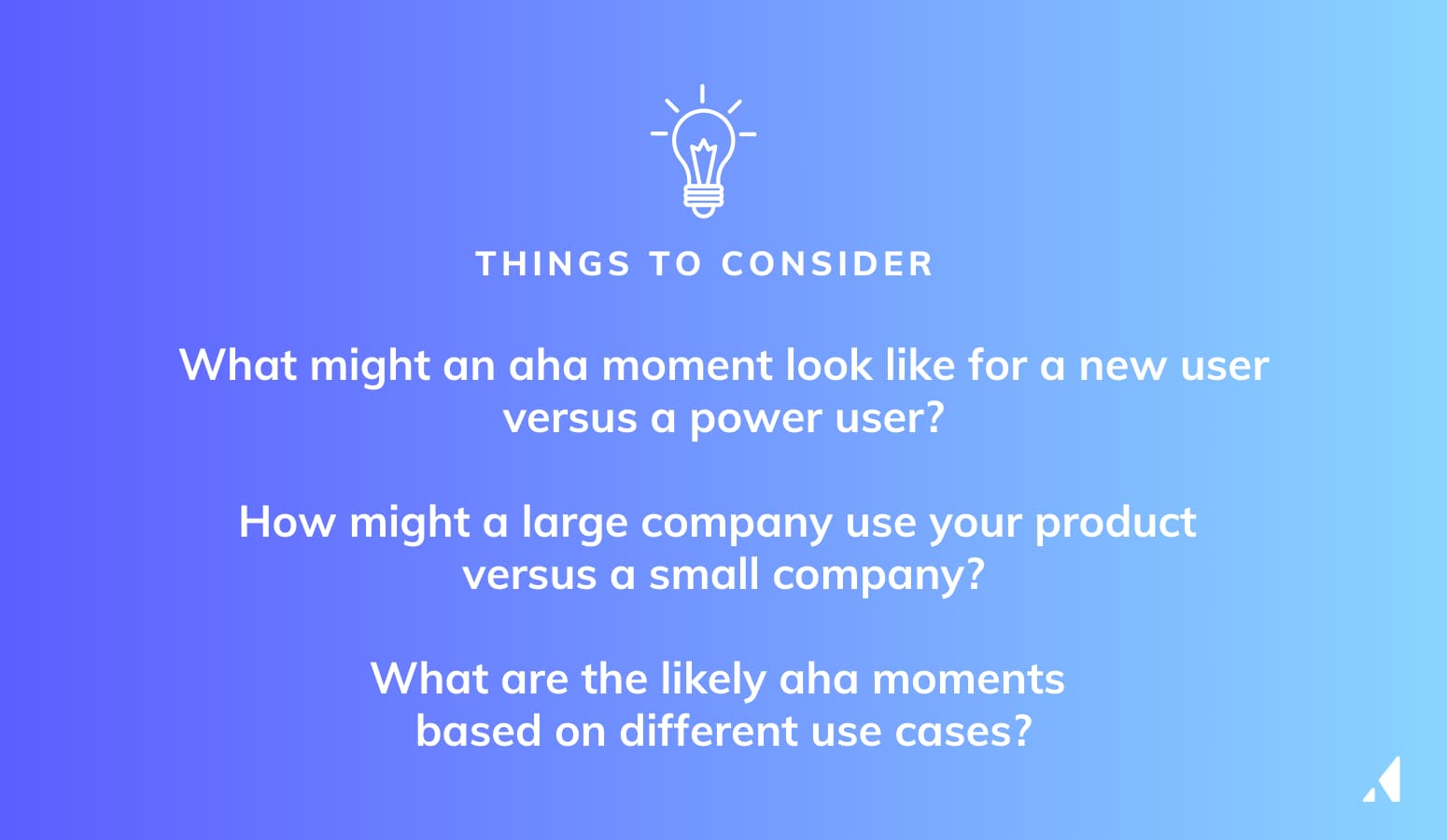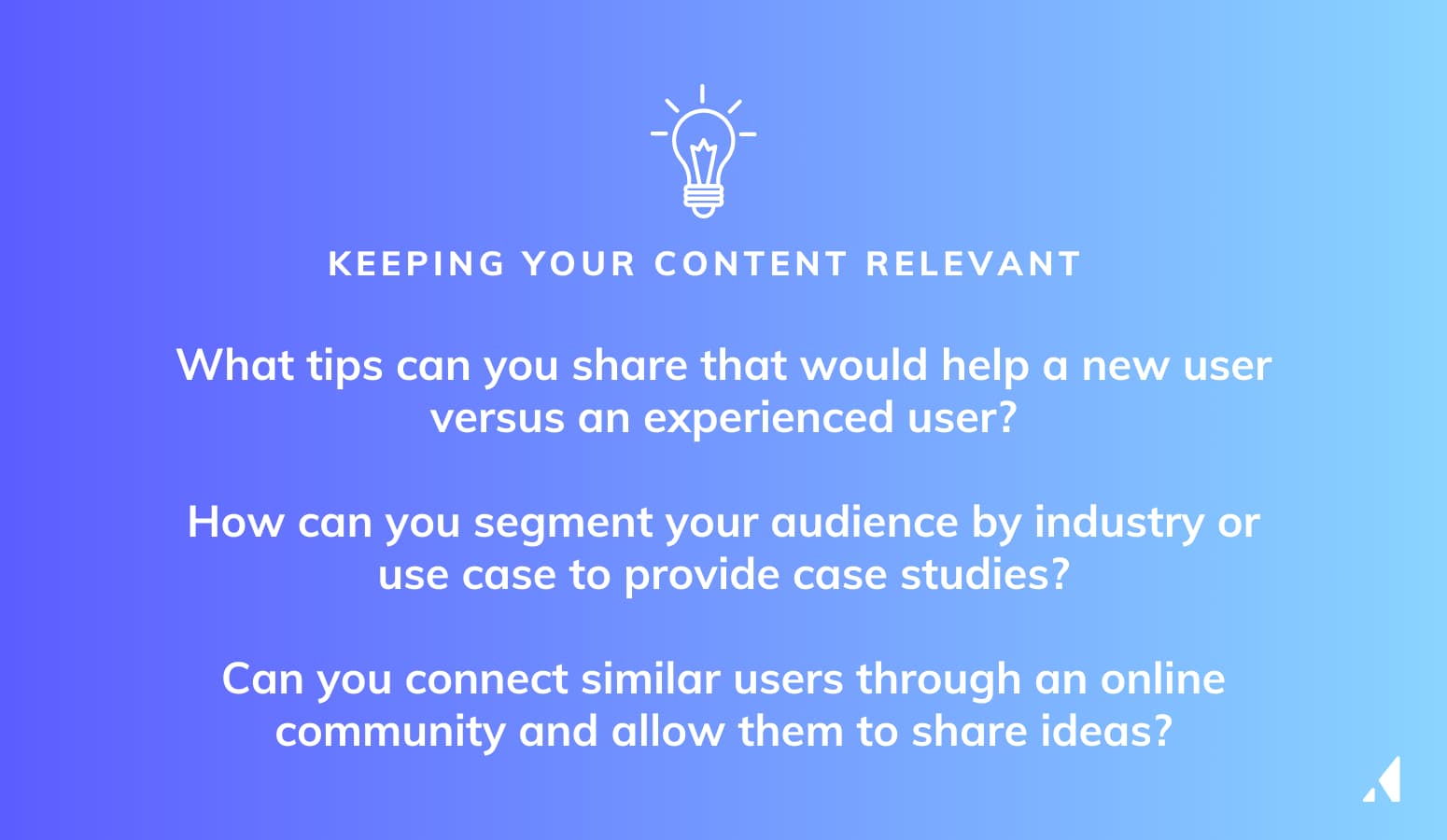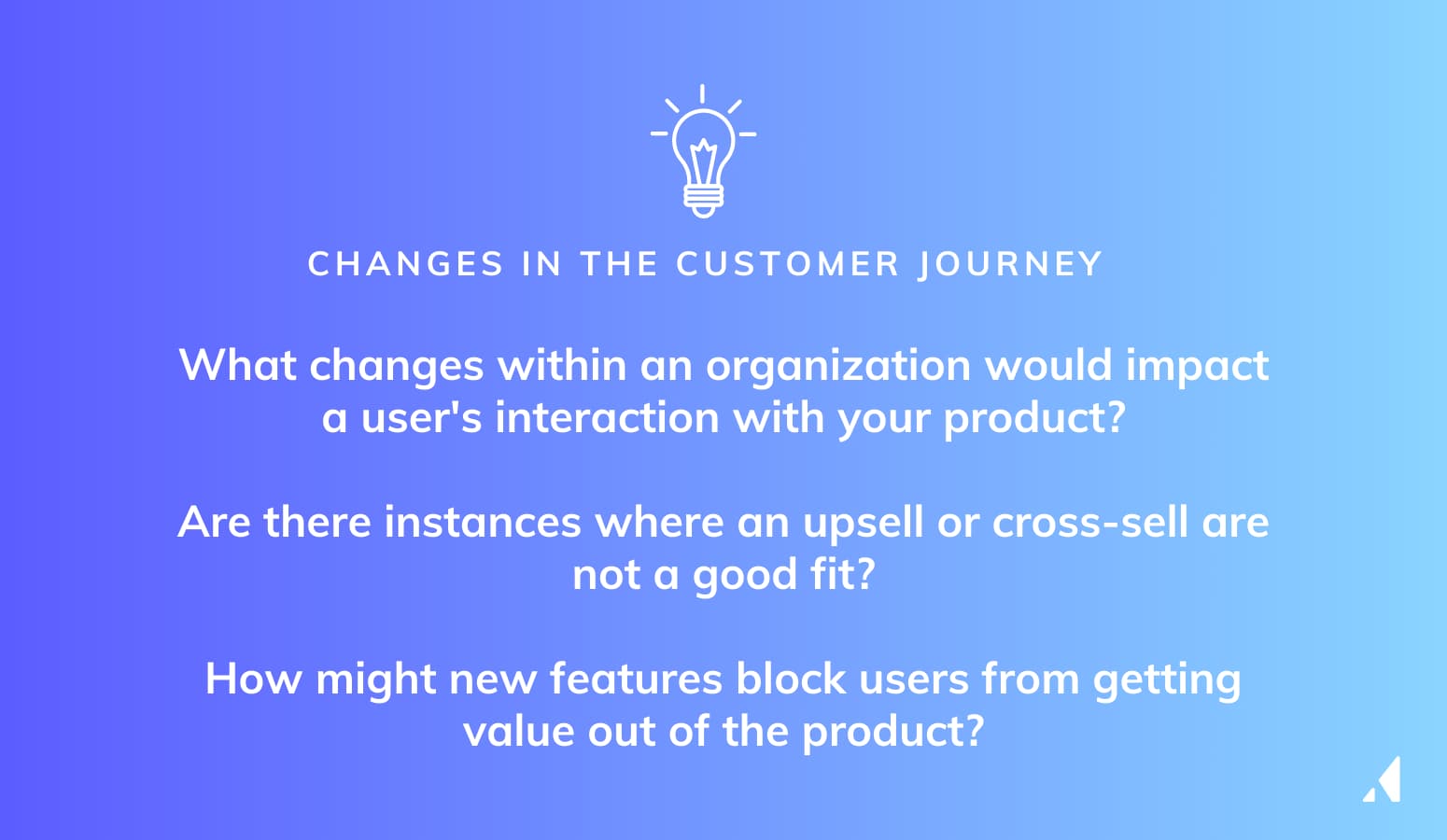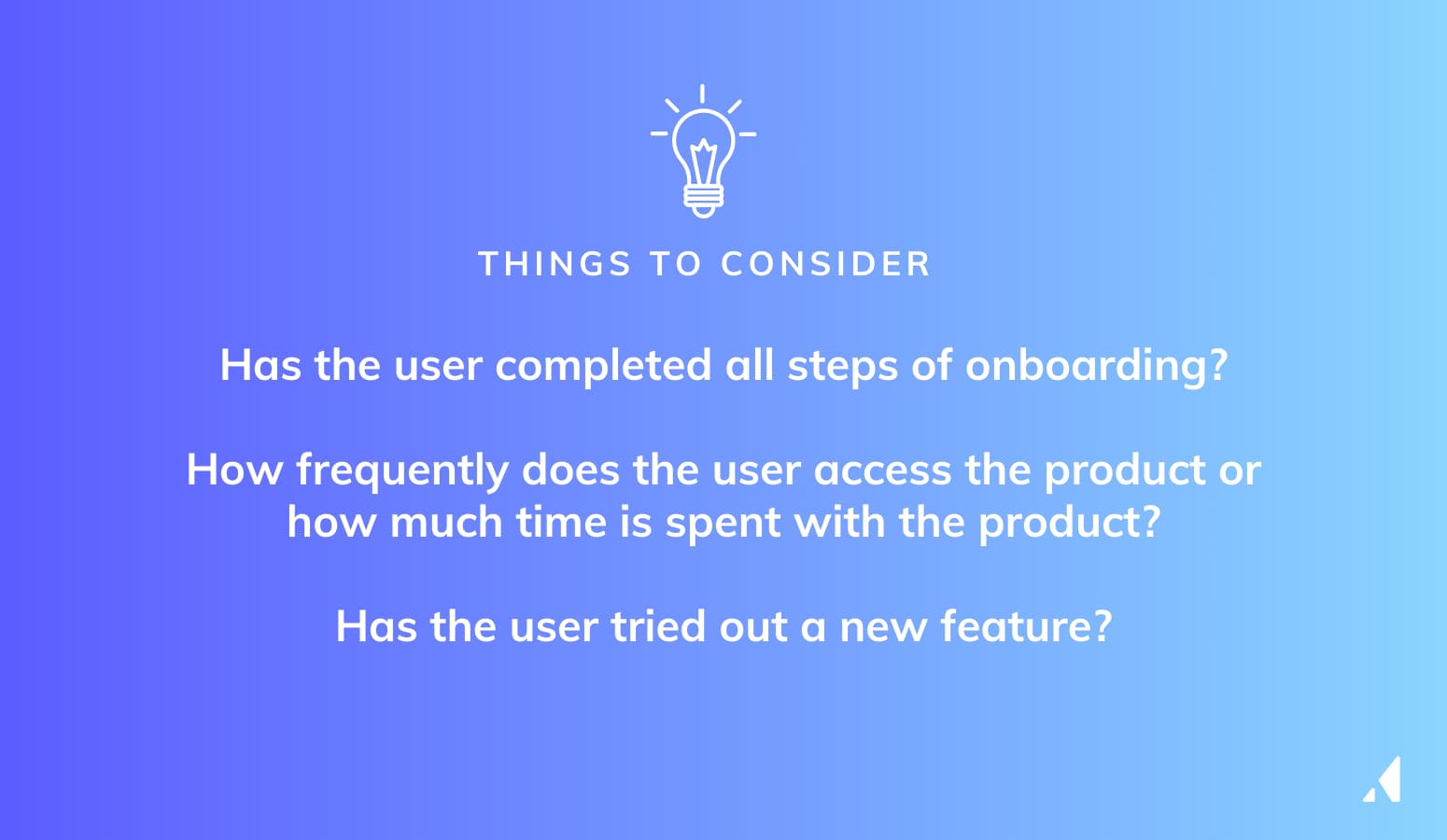How to drive product adoption: 5 proven strategies

.png)

.png)
We’ve come to expect personalization in all aspects of our lives. From the ads that appear in our social media feeds to Netflix’s “Because you watched...” recommendations, we want companies to know us. What may have first felt intrusive (dare we say it, creepy?) now feels natural... if done correctly.
Your product is no exception. If you want people to regularly use your product, you need to show them how it will be valuable for their specific needs. This nurturing is especially important for new products since both new and existing customers won’t be familiar with them. Product adoption occurs when your users begin to use your product and understand its value.
Personalization shouldn’t just happen at the signup stage. For product adoption to happen throughout the customer journey, you’ll need a variety of tactics to keep users engaged and happy.
While your product may do many amazing things, there are usually a few things that make it stand out. These features are the ones that make the value of your product click for users. When people finally realize that value, it’s known as the “aha moment.”
Your efforts to drive product adoption should focus on helping users uncover these aha moments. But it’s also important to understand that the moments may not look the same for all users, particularly if your product is more complex.
The first step is knowing which product features drive aha moments. Dig into what separates your converted users from other users, such as whether they completed all the onboarding steps or interacted with a core feature.

Using a product analytics tool, you may be able to identify behaviors that distinguish converted users from churned users. You can also send in-app surveys to find out which features your users find especially valuable.
By collecting data around your aha moments and the steps users take before reaching that moment, you can work to validate your assumptions and develop strategies around product adoption based on different paths your customers may take.
You probably don’t need us to tell you that you can increase product adoption by guiding users through an onboarding experience. But given that your product might have multiple use cases, the question becomes: how can you use personalized onboarding to help users reach their distinct aha moment sooner?
The key is surveying users during onboarding. Figure out their industry and pain points, so you can send users down different paths toward the features that are most likely to be aha moments.
Consider asking questions immediately after signup that will help you identify each type of user. These survey responses will help you keep your onboarding focused and sticky. And if new users become regular users, apply this knowledge after onboarding for future personalization.

Onboarding is your first opportunity to show your users that you understand them and that your product can meet their needs. Think carefully about how you can create an individualized experience that can drive product adoption.
Even if your users have completed onboarding and reached their aha moments, it is not the time to sit back and assume everything is fine. Remember, your users are constantly hearing messages from your competitors about how other products can meet their needs. Even if a competitor doesn’t entice them, a user may simply lose interest in your product over time and abandon it.
This is why you should look at product adoption as an ongoing process through the lens of “ongoing.” You want users to continually see the value of your product or, better yet, see even more value from it as more time passes.
Among many ways to nurture existing users, a key tactic is sending personalized content that helps users think about your product and brand in new ways. As your user base grows, you might share case studies with customers who have similar backgrounds. Or, you could provide tips and tricks via email based on industry.
Provide content that speaks to users’ individual needs by asking yourself these questions:

If you want the content to drive product adoption, you need to also think about its form. Not all users will absorb information in the same way, so use a variety of forms—blog, email, video, and more—to see what sticks with different sectors of your audience.
It’s easy to think of product adoption as a linear process. A customer signs up for your product, uses it enough to recognize its benefits, and becomes a regular user who engages with the same features.
While some individuals’ product usage may be steady, others may have varying interactions with your product over time due to changing needs. They may need to downgrade their account due to turnover at their company. Or, a long-time customer might opt for an upsell or a cross-sell that throws them back to the “new user” category. And, of course, your product will also change over time as you roll out new features.
To keep all users engaged, ask yourself what changes could force users to go backward in their product adoption.

With any of these major changes, you want to personalize your communication—whether that means direct correspondence from an account rep or targeted messaging based on the shift your user is experiencing. In all cases, you are acknowledging to your users that you know they are experiencing change, and you are ready with resources to help.
Your personalization strategy for driving product adoption doesn’t rest solely on one department. It’s a combined effort across the company, from sales to marketing to customer service.
Say a user contacts your customer service department because they don’t understand a new feature that was part of an upsell. The support rep needs to understand the reason behind the upsell and how to help the customer. Your marketing team needs to understand that emails to new users should be limited so that they don’t get overwhelmed.
Create a playbook that guides each department in supporting users based on their individual needs. You can use industries, use cases, stages of the customer journey, or changes in the customer journey to give each team examples of personalized interactions. For example, if the user is new, the support team can be ready with a list of FAQs, and the marketing team can send out an email with a “did you know?” tip.
Another key to cross-departmental collaboration is easy access to data, whether that’s product analytics, data from Google Analytics, or event tracking. This information will empower all departments to answer questions like:

With access to customer data, every team member can gauge what stage a user is in and what they need to stay engaged with your product.
The more you can incorporate personalization into your product adoption strategies, the more you can form a connection with your customers. And those connections are likely to improve customer retention.
But even implementing personalization doesn’t guarantee that all users will stay engaged with your product. You also need to identify metrics to measure success and identify areas for improvement. As you track this information for acquired and lost users, you’ll find more reliable ways to drive product adoption.